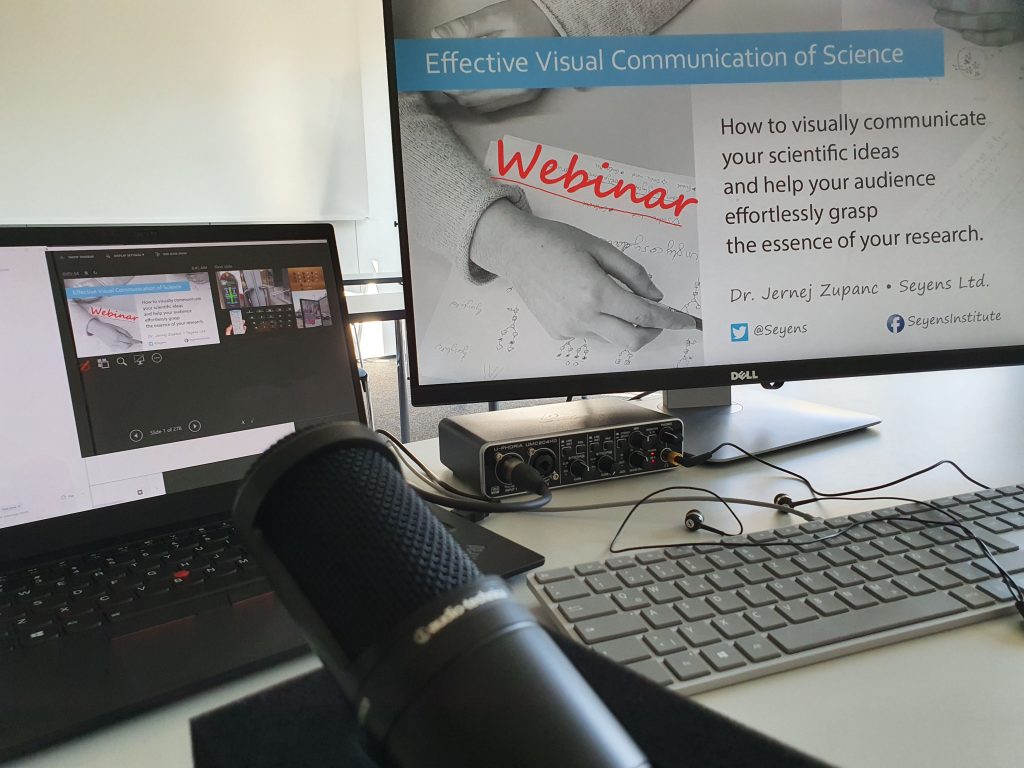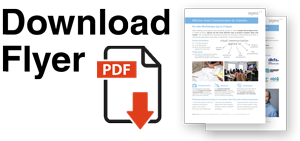Visual Communication Webinar – Dear Organizer
Thank you for considering/organizing a Seyens webinar for your researchers. This page will help you decide on the duration and content of the webinar, and be assured about the quality of the content and experience for participants. I use the expressions “webinar” and “online workshop” interchangeably. This webpage was created at the beginning of the COVID-19 pandemic and for my most up-to-date training offers, please check Seyens Workshops.
Webinar experience—participant’s perspective
The webinar is an adaptation of my workshops which are in demand at excellent research institutions around the world.
- Content: I will give you actionable advice so you can improve your own visualizations right away. Everything you learn will be structured and memorable, and the experience enjoyable and fun. If I am successful, I will change the way you think about communication, not only in your science, but also in your life.
- Personalized feedback & interactivity: you will be able to submit your materials (figures/slides—depending on the webinar duration) before the event. I will make a selection and give personalized feedback. In the longer webinars, you will also give feedback to your colleagues and receive theirs. You will be able to ask any question regarding visual communication of science and get immediate answers. I also have planned quizzes and discussions.
- Audio/video quality: I use professional grade equipment for crisp sound and image and use high speed internet to ensure an optimal experience for participants.

Organizer’s perspective
- Participants: the webinar is limited to 20, and I encourage diverse groups of researchers at different stages of their career (PIs welcome). All participants must be affiliated with the institution, external participants are not allowed.
- Organization: similar to in person workshops. After you collect registrations, you will either share their emails with me or forward them my instructions. I take over all other communication with the participants from that point on. The instructions contain all necessary information for the participants (submitting their materials, webinar software, schedule, to-do).
- Duration & content: Since Autumn 2022, half-day and 1-day events are available, both in combination with a self-study module so despite the shorter format, participants cover all lectures and all interactive exercises.
Fundamental Visual Communication |
|
| 🎤 | How to effectively communicate with scientific and non-scientific audiences |
| 🎤 | Visual perception and what humans find intuitive |
| 🎤 | Layout: a global structure that communicates the gist |
| 🎤 | Eye-flow: effortlessly guide the audience through the design |
| 🎤 | Colors: how to amplify, not ‘fancify’ |
| 🎤 | Typography: how to choose and combine fonts for legibility, structure, and aesthetics |
| 🎤 | Visual consistency: how to make consistent style for multiple figures |
| 🎤 | General design advice: approaches used by professional science illustrators |
Applied Visual Communication |
|
| 🎤 | Slides that don’t distract and amplify your messages when presenting |
| 🎤 | Conference posters: purpose, strategy and process for creating posters that attract and explain |
| 🎤 | Digital image file-types: compression, resolution and the best use of vector and raster images |
| 🎤 | Grants/project proposals: how to structure and visually enhance a document to help the evaluator |
Exercises & Group work |
|
| 🗨 | Discussion on pre-submitted figures: personalized feedback on a selection of figures from participants and discussion. |
| 🗨 | Feedback on slides: personalized feedback on a selection of figures from participants and discussion. |
| ✍ | Graphical abstract drawing exercise: draw a sketch of your own research. |
| 🤝 | Group work – graphical abstract sketch feedback: give feedback and receive feedback from peers |
Additional information


